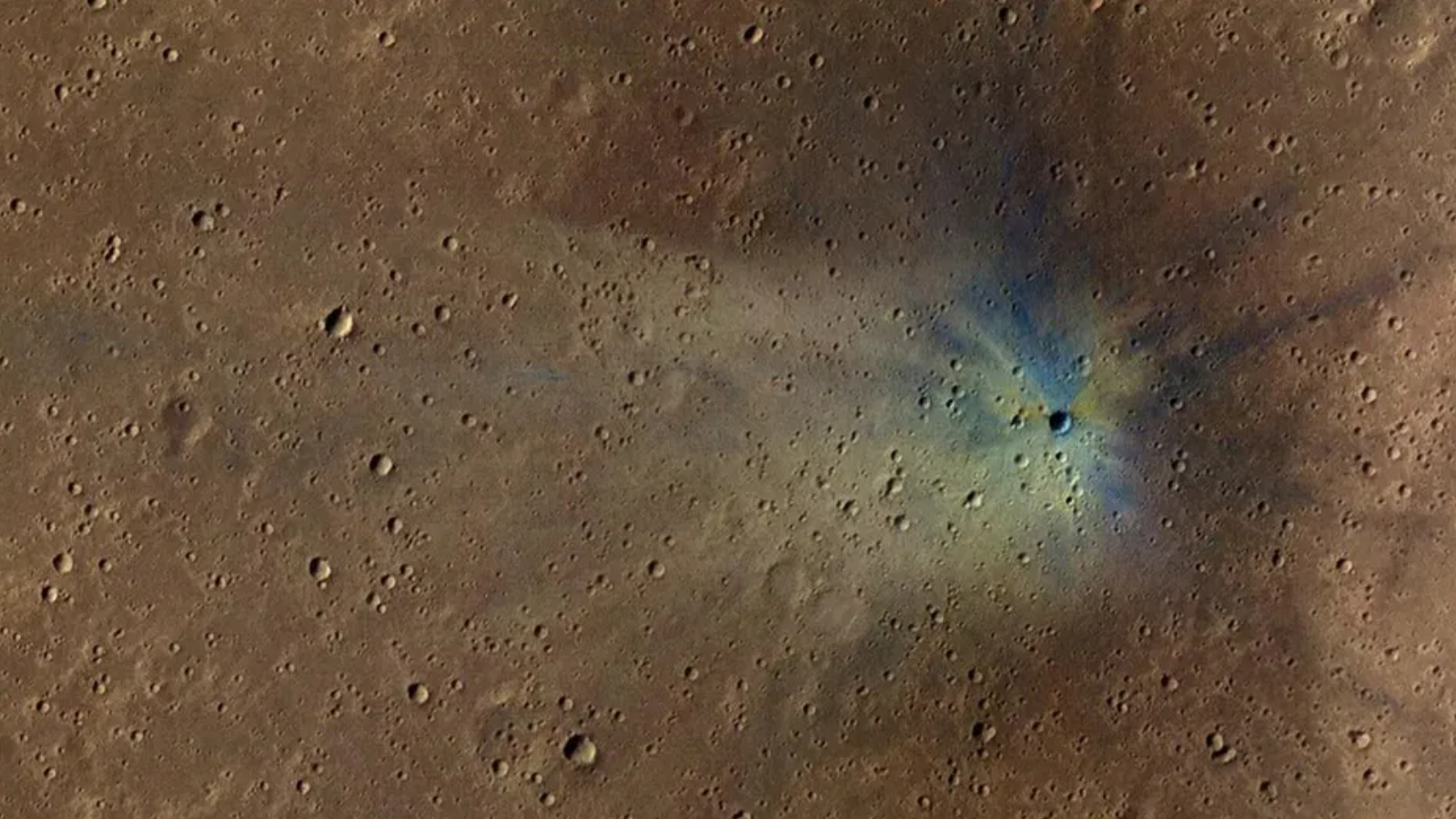Giant Mars asteroid impact creates vast field of destruction with 2 billion craters
An asteroid struck Mars 2.3 million years ago, throwing debris across a region of the planet equal to four times the length of the Grand Canyon.

Over two million years ago, a giant asteroid slammed into Mars, scarring the surface with one massive crater and around two billion smaller individual craters. These secondary craters appear across a region of 1,000 miles (1,800 kilometers), making this asteroid event one of the biggest impacts seen on the Red Planet in relatively recent history.
Asteroids massive enough to create widespread destruction like this are estimated to impact Mars just once every 3 million years.
The impact occurred at the equator of Mars in a region humanity has named Elysium Planitia; it left behind a main, 8.6-mile (13.9-km) wide and 0.62-mile (1-km) deep crater called Corinto. The secondary craters from the impact, on the other hand, range in size from 656 feet (200 meters) to 0.8 miles (1.3 km) in diameter and extend outward in a large "ray system," according to the scientists behind the results.
Despite being 2.3 million years old, the crater and its secondaries — some of which are carved into lava flows originating from the summit of the extinct Martian volcano Elysium Mons — are considered to be extremely young by the team.
Related: Drilling for water ice on Mars: How close are we to making it happen?
"Corinto crater is a fresh impact crater in Elysium Planitia that produced one of the most extensive systems of thermal rays and secondary craters on Mars, extending around 1,243 miles (2,000 km) to the south and covering a nearly 180° arc on Mars," the team wrote in a related study.
The authors explained how they employed both thermal and visible imaging data collected by NASA's Mars Reconnaissance Orbiter to describe the crater and blanket of fragments, or "ejecta," thrown into the Martian atmosphere by the impact. Ejecta refers to any material that's "ejected" from a crater as a result of some impact. In this case, the ejecta are pieces of Mars shot out from the giant, main crater cavity formed due to the asteroid's crash.
Breaking space news, the latest updates on rocket launches, skywatching events and more!
This data, gathered by the spacecraft's High-Resolution Imaging Experiment (HiRISE) and Context Camera (CTX) instruments, was given to a machine learning program that separated this impact's ejecta-caused craters from other Martian craters originating from asteroid strike events specifically. This information was then used to estimate the age of the impact and the total number of secondary craters the initial impact generated.
Measuring the distribution of secondary craters extending out from Corinto, the team found the greatest concentrations to the south and southwest of the main impact crater.
There is a lack of ejecta to the north of the crater, which the scientists think indicates the asteroid that caused this devastation entered the Red Planet's atmosphere at an angle of around 30 to 45 degrees from the north or northeast.
The furthest secondary craters found by the researchers indicated that some of the ejecta from the impact were launched as far as 1,150 miles (1,850 km). That's about four times the length of the Grand Canyon.
The secondary craters didn't just vary in distance from the main impact zone and in size, however. The team behind the findings also classified them in relation to their shape. Some were round and semi-circular, while others appeared "flattened circular," or "elliptical."
The researchers determined that the shape, or "morphology," taken by the secondary craters related to the speed at which the fragments that created them were ejected, the size of those fragments, and the surface composition of the Martian region on which they crashed. Close to Corinto, the secondary craters took the form of semi-circles, with elliptical-shaped craters found further from the main impact zone.
"The large number of secondary craters formed by Corinto are consistent with most of the ejected material being strong, competent basalt," the team wrote.
Basalts are volcanic rocks formed by the rapid cooling of lava rich in magnesium and iron, so the fragments likely represent lava that previously spewed from the volcano that the asteroid slammed into.
The composition of some of the ejecta launched from Mars' surface by this asteroid impact indicate the space rock slammed down into water or ice. This is also indicated by "pits" spread across the floor of the Corinto crater, which imply the drainage of water or gas released by the effect of the impact on ice-rich materials.
The team's results were presented at the 55th annual Lunar and Planetary Science Conference in Texas earlier in March.

Robert Lea is a science journalist in the U.K. whose articles have been published in Physics World, New Scientist, Astronomy Magazine, All About Space, Newsweek and ZME Science. He also writes about science communication for Elsevier and the European Journal of Physics. Rob holds a bachelor of science degree in physics and astronomy from the U.K.’s Open University. Follow him on Twitter @sciencef1rst.


